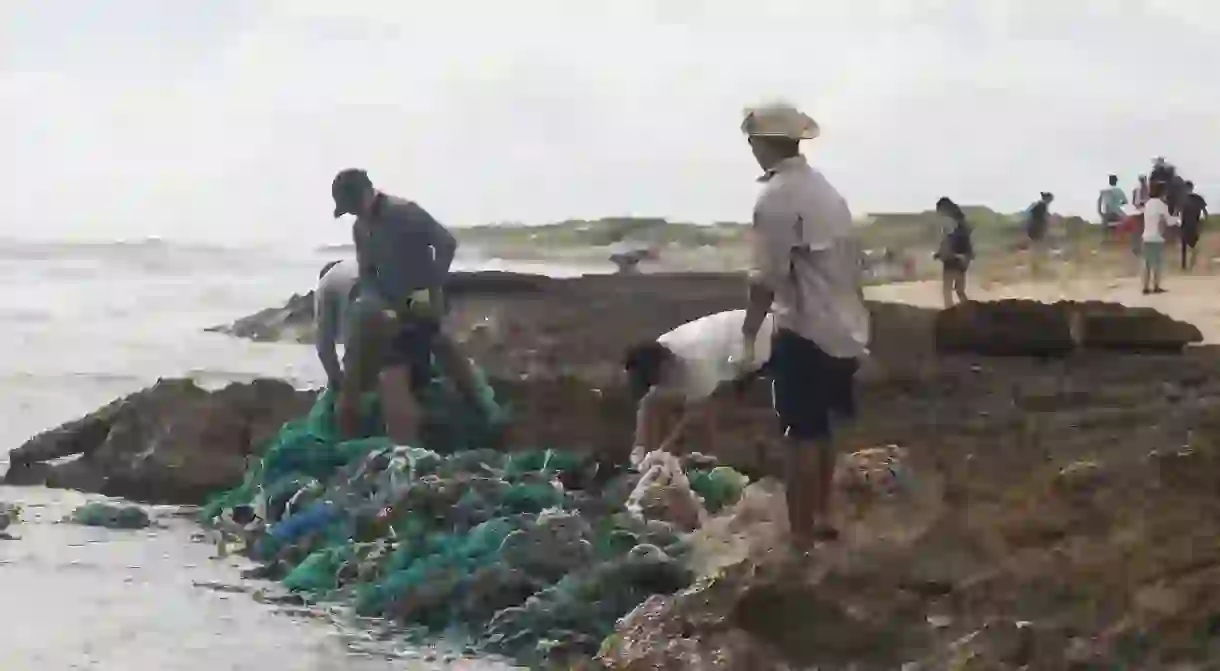8 Ways to Volunteer in Hawaii and Give Back to the Community

In the aftermath of Hawaii’s scarring volcanic activities of late, there is more room than ever before to volunteer and give back within the Hawaiian community.
Whether volunteering for just a day or making it an ongoing commitment, there are many ways to give back while learning something new and meeting a few friends too. Volunteer opportunities in Hawaii are as diverse as the islands themselves—find one that you’re passionate about. Here are just a few ways that you can help make a difference in the Aloha State.
Observe endangered bird populations
International and local ornithologists will enjoy viewing native birds and lending a hand to the Hawaii Audubon Society. They organize habitat restoration outings for wedge-tailed shearwaters at the Freeman Seabird Preserve during January, February, and March, and further projects at Kawainui Marsh, home to four species of endangered birds. They also survey, count, monitor, and photograph birds throughout the islands.
Count humpback whales
Hawaii’s largest mammals arrive each year to the islands to give birth in the warm shallow waters. During the last Saturday of January, February, and March—the peak of whale season—the Sanctuary Ocean Count project organizes meetups at locations throughout the state to monitor the population of the endangered North Pacific humpback whales.

Organize or join a beach cleanup
The nonprofit community group West Maui Kumuwai organizes beach cleanups, maintenance and planting of native plants, and informative lectures about environmental conservation. Other organizations such as the Waikiki Aquarium, 808 Cleanups, and Sustainable Coastlines Hawaii offer similar events.

Restore an ancient Hawaiian fishpond
Aquaculture was an important source of subsistence for the Hawaiians who perfected an extremely innovative, unique, and efficient technique not used by any other culture in the world. The over 800-year-old loko iʻa (fishponds), such as Paepae o Heʻeia and Waikalua on Oʻahu and Koʻieʻie on Maui, rely on school groups and volunteers who learn about the methods of old, help rebuild rock walls, remove invasive species, and more.
Preserve a unique volcanic environment
The natural ecosystem of the Big Island’s Hawai‘i Volcanoes National Park and Haleakalā National Park on Maui are extremely fragile and home to plants and animals that can’t live in any other environment. The parks always have work for volunteers to kōkua (help) pull out invasive plants, maintain facilities, and restore the native forests.

Reforest and clear a hidden valley not open to the public
Maui volunteers get an exclusive look inside Honokowai Valley, once the location of a self-sufficient ancient Hawaiian village of over 600 families. Help is needed to clear the archaeological sites, which include hale (homes), heiau (temples), and loʻi (taro patches), in addition to reforesting the area with native plants.
Help put a stop to Hawaii’s homelessness crisis
Just a few years ago, Hawaii had the highest rate of homelessness per capita in the U.S. due to a compilation of various factors, including the extremely high cost of living; housing costs are currently the highest in the nation and continue to rise. You can help organize a fundraiser, prepare and serve meals, provide childcare, and more with organizations like the Institute for Human Services, Help the Homeless Keiki, and Hope Services.

Monitor Hawaiian monk seals or green sea turtles
Helpers on all the islands work to protect and educate the public about the native Hawaiian monk seals and Hawaiian green sea turtles, who pop up to rest on the beach. Because of loss of habitat, they come in close proximity to humans, and that’s where volunteers step in to set up buffer zones to safely view the animals, monitor them and make sure legal distances are being observed, respond to emergencies and injuries, and provide educational outreach.














